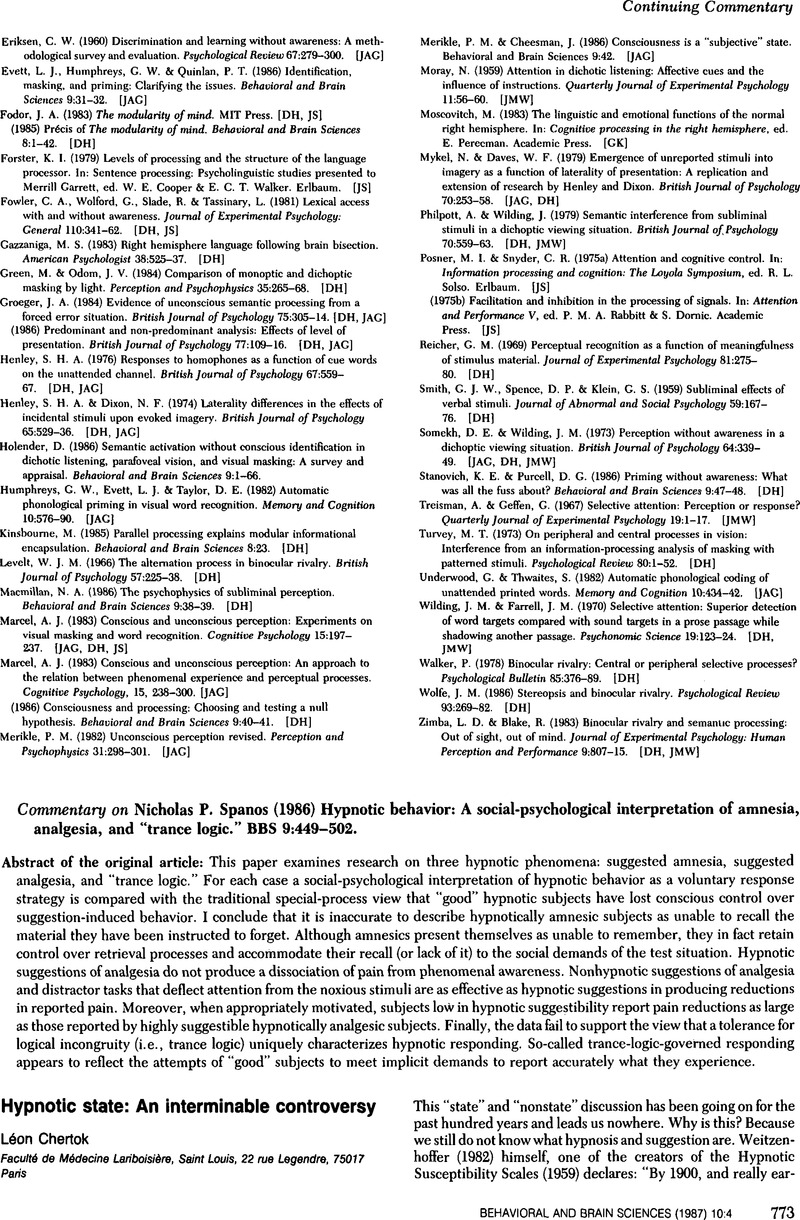Crossref Citations
This article has been cited by the following publications. This list is generated based on data provided by Crossref.
MacKay, William A.
1991.
Consciousness is king of the neuronal processors.
Behavioral and Brain Sciences,
Vol. 14,
Issue. 4,
p.
687.
Gulick, Robert Van
1991.
Consciousness may still have a processing role to play.
Behavioral and Brain Sciences,
Vol. 14,
Issue. 4,
p.
699.
Mangan, Bruce
1991.
Epi-arguments for epiphenomenalism.
Behavioral and Brain Sciences,
Vol. 14,
Issue. 4,
p.
689.
Koch, Christof
and
Crick, Francis
1991.
Understanding awareness at the neuronal level.
Behavioral and Brain Sciences,
Vol. 14,
Issue. 4,
p.
683.
Dixon, N. F.
1991.
Hydrocephalus and “misapplied competence”: Awkward evidence for or against?.
Behavioral and Brain Sciences,
Vol. 14,
Issue. 4,
p.
675.
Velmans, Max
1991.
Consciousness from a first-person perspective.
Behavioral and Brain Sciences,
Vol. 14,
Issue. 4,
p.
702.
Economos, Judith
1991.
Observing protocol.
Behavioral and Brain Sciences,
Vol. 14,
Issue. 4,
p.
677.
Navon, David
1991.
The function of consciousness or of information?.
Behavioral and Brain Sciences,
Vol. 14,
Issue. 4,
p.
690.
Inhoff, Albrecht Werner
1991.
Limits of preconscious processing.
Behavioral and Brain Sciences,
Vol. 14,
Issue. 4,
p.
680.
Lloyd, Dan
1991.
Consciousness: Only introspective hindsight?.
Behavioral and Brain Sciences,
Vol. 14,
Issue. 4,
p.
686.
Keane, Mark T.
1991.
Consciousness, analogy and creativity.
Behavioral and Brain Sciences,
Vol. 14,
Issue. 4,
p.
682.
Stanovich, Keith E.
1991.
Damn! There goes that ghost again!.
Behavioral and Brain Sciences,
Vol. 14,
Issue. 4,
p.
696.
Corteen, Raymond S.
1991.
Consciousness and making choices.
Behavioral and Brain Sciences,
Vol. 14,
Issue. 4,
p.
674.
Gardiner, John M.
1991.
Memory with and without recollective experience.
Behavioral and Brain Sciences,
Vol. 14,
Issue. 4,
p.
678.
Shevrin, Howard
1991.
A lawful first-person psychology involving a causal consciousness: A psychoanalytic solution.
Behavioral and Brain Sciences,
Vol. 14,
Issue. 4,
p.
693.
Spiegel, David
1991.
Dissociating consciousness from cognition.
Behavioral and Brain Sciences,
Vol. 14,
Issue. 4,
p.
695.
Gregson, Robert A. M.
1991.
Has consciousness a sharp edge?.
Behavioral and Brain Sciences,
Vol. 14,
Issue. 4,
p.
679.
Klein, Raymond
1991.
Is consciousness information processing?.
Behavioral and Brain Sciences,
Vol. 14,
Issue. 4,
p.
683.
Dretske, Fred
1991.
Conscious acts and their objects.
Behavioral and Brain Sciences,
Vol. 14,
Issue. 4,
p.
676.
Baars, Bernard J.
1991.
A curious coincidence? Consciousness as an object of scientific scrutiny fits our personal experience remarkably well.
Behavioral and Brain Sciences,
Vol. 14,
Issue. 4,
p.
669.



